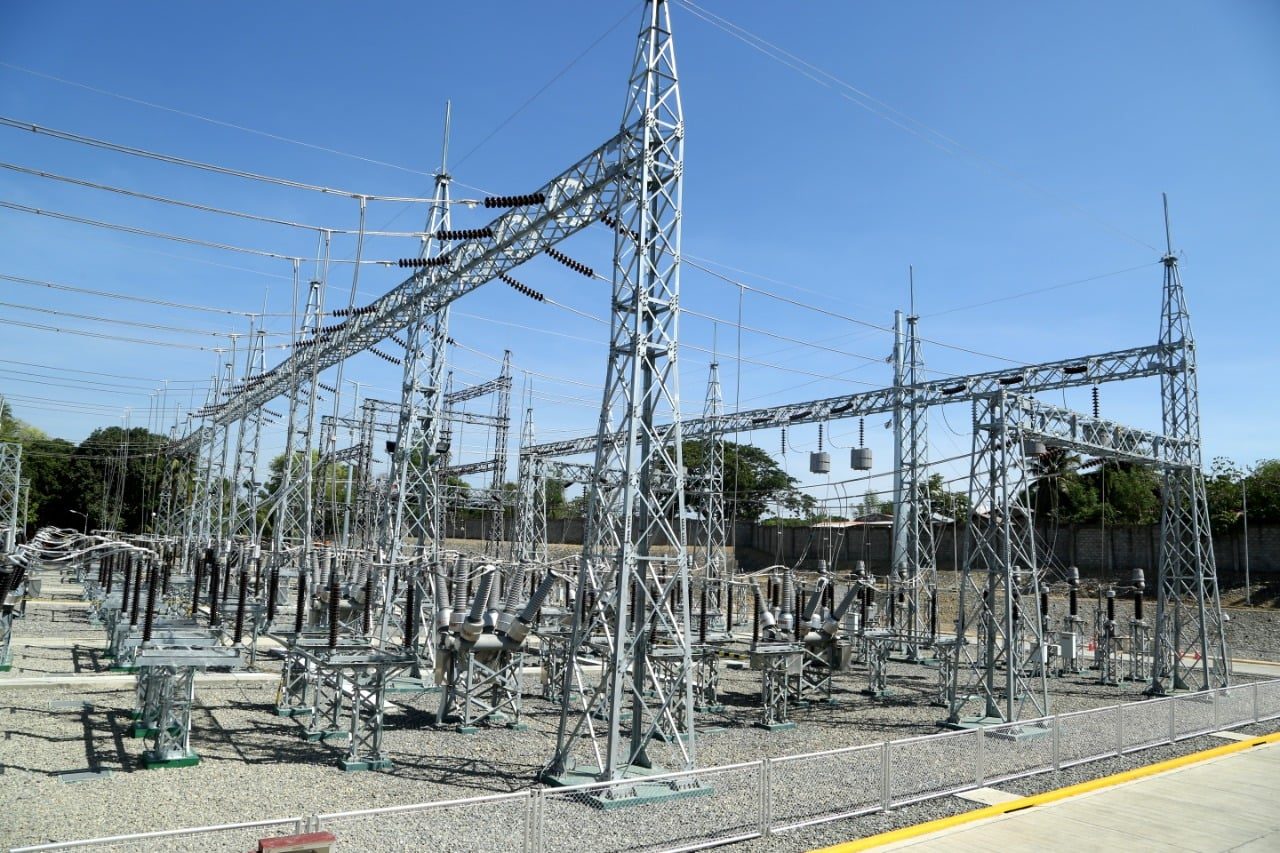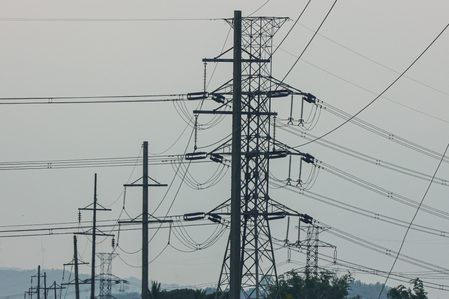SUMMARY
This is AI generated summarization, which may have errors. For context, always refer to the full article.

MANILA, Philippines – An island-wide blackout, a public scolding from no less than the President, and a magnified lens over its Chinese owners and profits – these are the makings of the perfect storm for the company behind the Philippines’ power grid operator.
In the wake of all these issues that the National Grid Corporation of the Philippines (NGCP) is facing, the President’s cousin, Speaker Martin Romualdez, is making a bold proposal for Marcos’s controversial wealth fund to invest into the company.
Strike two
President Ferdinand Marcos Jr. already called out NGCP twice, with the latest one being the most scathing.
In a video message on Friday, January 5, Marcos blamed NGCP for the massive outage in Western Visayas, causing “significant hardship” in businesses and healthcare.
“Accountability lies with the NGCP. They are tasked with grid stability. Stability involves proactive responses to breakdowns and unexpected events, a duty that NGCP unfortunately has not fulfilled adequately,” Marcos said.

Marcos first made known his disappointment with NGCP last July 2023, during his second State of the Nation Address.
Marcos said NGCP had failed to implement 68 grid connections, citing data from the Energy Regulatory Commission (ERC). This effectively resulted in unstable power supply in Luzon and Visayas, especially during peak demand during the summer.
Marcos added that he looks forward to seeing the private grid operator “complete all of its deliverables,” starting with the Mindanao-Visayas and Cebu-Negros-Panay interconnections.
By the numbers
Economic losses. Iloilo Mayor Jerry Treñas expressed his disappointment over the power interruptions, saying the blackouts have cost his city alone at least P400 million to P500 million in economic losses.
Prior to the January 2, 2024 incident, blackouts occurred back in April 2023.
Energy Secretary Raphael Lotilla said the blackouts in Iloilo, Capiz, Aklan, and Antique were preventable.
Lotilla said NGCP failed to act on the power disturbance due to the trip offs of the Panay Energy Development Corporation (PEDC) Units 1 and 2 and the Palm Concepcion Power Corp. (PCPC) Unit 1.
Meanwhile, the Independent Electricity Market Operator of the Philippines, the company which facilitates electricity trade in the country, said there was a two-hour window when the NGCP could have proactively called on the distribution utilities and electric cooperatives to reduce their load to prevent a collapse.
Marcos has directed the ERC to reset NGCP’s rates without further delay.
The NGCP insisted that it immediately fixed the transmission system and normalized voltage before several power plants “inexplicably tripped” on Tuesday.
“Rather than using NGCP as a scapegoat, we urge policymakers to be objective in their search for facts and not coddle certain sectors,” the power grid agency said. (READ: As power returns to Western Visayas, NGCP claps back at critics)
“We again reiterate our push for a comprehensive industry-wide approach to resolve the persistent power supply issues on Panay Island and elsewhere in the country,” NGCP added.
Missed targets. The recent blackouts add to the NGCP’s failures, including the 68 delayed transmission projects – 36 in Luzon, 21 in Visayas, and 11 in Mindanao. These projects have a combined worth of P231 billion, which the NGCP was supposed to have invested in between 2009 and 2019.
The Marcos administration is aiming to electrify 100% of households in the country by 2028.
Profits. Prior to the outages, the NGCP faced scrutiny over its exorbitant profits. The ERC found that the NGCP earned more than it should. Preliminary findings of its performance review found that the NGCP should only earn up to P183.5 billion from 2016 to 2022, or an average of P36.7 billion yearly. But it claimed a total of P387.8 billion or an annual average of P77.56 billion.
The ERC is currently reviewing the performance and rates of NGCP after it did not conduct a rate reset after 2015.
Meanwhile, the Philippine Center for Investigative Journalism found that NGCP billed some P2.6 billion worth of corporate social responsibility projects and publicity expenses to consumers.
The big picture
China’s presence. The recent blackouts have reignited calls to kick the Chinese investors out of NGCP. Some lawmakers even go as far as calling for grid operations to be nationalized once more.
China’s State Grid has a 40% stake in NGCP, which it bagged in 2008 during the Arroyo administration amid a power crisis which impacted government finances.
The 60% is owned by companies of Henry Sy Jr. and Robert Coyiuto Jr., who are among the richest Filipino tycoons.
In a hearing last May 2023, Senate committee energy chair Raffy Tulfo said he told the president that China’s presence in the power grid had security risks. He also floated the possibility of canceling NGCP’s franchise.
Marcos’ wealth fund. Maharlika Investment Corporation president and CEO Rafael Consing Jr. expressed that he is backing the proposal of Speaker Martin Romualdez to invest funds into NGCP.
Amid the four-day blackouts, Romualdez said it would be a “strategic investment” to do so.
“This event has highlighted critical issues in our power infrastructure, impacting numerous businesses, industries, and the daily lives of our citizens,” Romualdez said.
In a statement released by Malacañang, Consing said that “through such an investment, Maharlika would become a dedicated partner in tackling the Philippines’ complex energy challenges.
“By working hand-in-hand with NGCP’s existing shareholders, Maharlika can leverage its unique financial resources and development expertise to accelerate critical infrastructure upgrades, promote renewable energy integration, and improve overall grid efficiency.”
The Maharlika fund aims to fast-track Marcos’ ambitious P8.7-trillion infrastructure push. Based on the latest list provided by the National Economic and Development Authority, investing in NGCP is not on the agenda.
“Transparency and accountability must be paramount throughout the process to ensure efficient use of public funds and maximum benefit for the nation. However, the potential rewards are well-worth the exploration,” Consing said.
Consing and Romualdez’ proposal will have to be approved by the Maharlika board.
Kabataan Party floated the idea of the national government taking over NGCP and opposed the investment of Maharlika.
“From the onset, the Maharlika Investment Scam gambles the people’s funds for investments benefiting cronies and favored companies. Maharlika investing into NGCP, a private grid corporation owned by China and two Filipino billionaires, will only line the pockets of the rich and the powerful amidst its role in the Western Visayas blackouts. Why not directly use people’s funds to nationalize NGCP instead?” Kabataan Party Representative Raoul Manuel said in a statement. – Rappler.com
Add a comment
How does this make you feel?




![[Just Saying] SONA 2024: Some disturbing points](https://www.rappler.com/tachyon/2024/07/TL-marcos-sona-points-july-23-2024.jpg?resize=257%2C257&crop=335px%2C0px%2C720px%2C720px)

There are no comments yet. Add your comment to start the conversation.